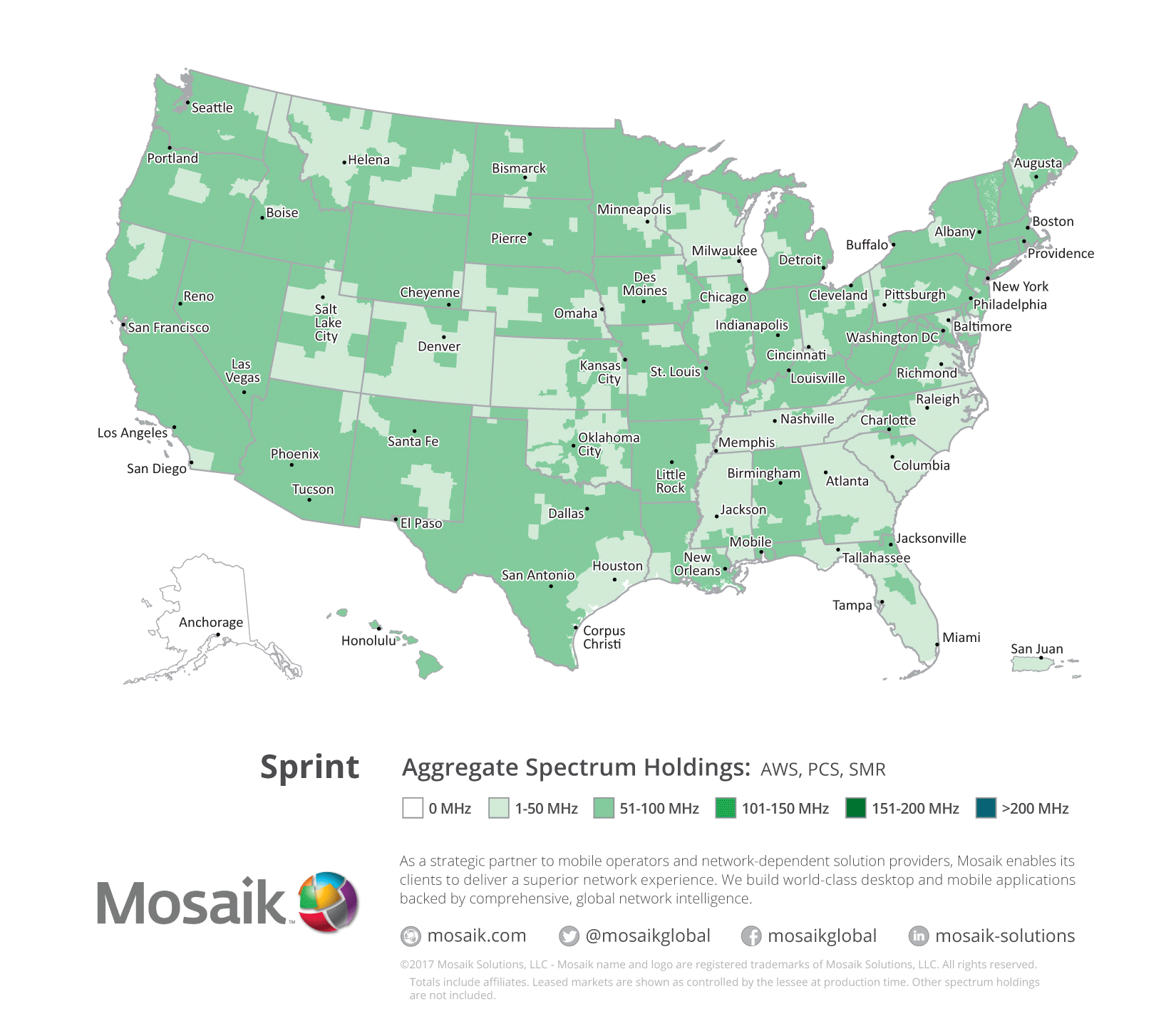Coverage maps provided by Mosaik Solutions
Inside Towers has been covering the back and forth between T-Mobile and Sprint regarding a possible network merger, which would create a formidable player in terms of subscribers. But what exactly will this joint network look like from a coverage perspective?
Both Sprint and T-Mobile have good coverage in cities and urban areas but are still lacking in rural areas, where AT&T and Verizon take the lead. Combining these two networks won’t necessarily put the new network on par with AT&T and Verizon, but it will become a formidable player. Plus, with T-Mobile’s $8 billion score in the 600 MHz auction earlier this year, coverage should only get better as the network gets built out.
According to John Gilmer, VP of Data Integrity at network intelligence firm Mosaik, “a combined network would be very competitive in the future, thanks to nice spectrum holdings.”
But gratification for consumers won’t happen overnight. Combining two separate wireless networks is a long and complex process, especially because T-Mobile and Sprint use different LTE bands and different 2G networks. Gilmer predicts that network sharing among customer segments may take years. Additionally, this merger could be less beneficial for customers, since competition among wireless providers has historically helped keep prices down across the board.
If this merger goes through – and with looser FCC scrutiny under the Trump administration, it looks likely – the U.S. may soon get three equally-sized wireless players, limiting competitive offerings for consumers, like our Canadian neighbors to the north.
September 28, 2017




Reader Interactions